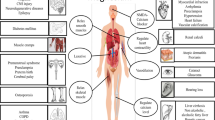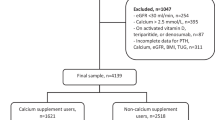Abstract
Medicinal plant products have been used in health care since time immemorial. During the past three decades, the use of herbal supplements has been on the rise in the USA. A number of these products have been shown to possess the potential to interfere with blood clotting. This paper is a review of blood-thinning herbal supplements commonly used in the USA, accompanied by discussion of the dental implications of their use along with suggestions for prediction and prevention of the risk of bleeding. Twenty herbal supplements belonging to four pharmacological groups are identified and reviewed. While the majority (45%) of the supplements reviewed possesses antiplatelet properties, the remaining are dispersed among anticoagulant (15%), a combination of antiplatelet and anticoagulant (15%), and other diverse groups (25%). The literature reveals that most of the available information on blood-thinning herbs is based on in vitro experiments, animal studies, and individual clinical case reports. Some herbal effects are also speculated based on theoretical grounds. These observations, together with the deficiency of the law regulating herbal supplements, indicate limitations of the literature and the regulatory mechanisms related to these products, further implying the need for additional research and improved regulation. While emphasizing the dental implications of the findings reported in the literature, suggestions were made for prediction and prevention of the risk of bleeding caused by herbal medications, based on the concepts of predictive, preventive, and personalized medicine.


Similar content being viewed by others
References
Abebe W. An overview of herbal supplement utilization with particular emphasis on possible interactions with dental drugs and oral manifestations. J Dent Hyg. 2003;77:37–6.
Kapinova A, Stefanicka P, Kubatka P, Zubor P, Uramova S, Kello M, et al. Are plant-based functional foods better choice against cancer than single phytochemicals? A critical review of current breast cancer research. Biomed Pharmacother. 2017;96:1465–77.
Hao P, Jiang F, Cheng J, Ma L, Zhang Y, Zhao Y. Traditional Chinese medicine for cardiovascular disease: evidence and potential mechanisms. J Am Coll Cardiol. 2017;69:2952–66.
Dubey SK, Singhvi G, Krishna KV, Agnihotri T, Saha RN, Gupta G. Herbal medicines in neurodegenerative disorders: an evolutionary approach through novel drug delivery system. J Environ Pathol Toxicol Oncol. 2018;37:199–208.
Martel J, Ojcius DM, Chang CJ, Lin CS, Lu CC, Ko YF, et al. Anti-obesogenic and antidiabetic effects of plants and mushrooms. Nat Rev Endocrinol. 2017;13:149–60.
Abebe W. Herbal supplements. Any relevancy to dental practice? N Y State Dent J. 2002;68:26–30.
Abebe A, Herman W, Konzelman J. Herbal supplement use among adult dental patients in a USA dental school clinic: prevalence, patient demographics, and clinical implications. Oral Surg Oral Med Oral Pathol Oral Radiol Endod. 2011;111:320–5.
Ge B, Zhang Z, Zuo Z. Updates on the clinical evidenced herb-warfarin interactions. Evid Based Complement Alternat Med. 2014;2014:957362–18. https://doi.org/10.1155/2014/957362.
Marriotti AJ. Use of herbs and herbal dietary supplements in dentistry. In: Dowd FJ, Johnson BS, Marriotti AJ, editors. Pharmacology and therapeutics for dentistry. 7th ed. St Louis, Missouri: Elsevier; 2017. p. 642–7.
Smith T, Kawa K, Eckl V, Morton C, Stredney R. US sales of herbal supplements increase by 7.7% in 2016. Herbal Gram. 2017;115:56–64.
National Institute of Health, Office of Dietary Supplements. https://ods.od.nih.gov/. Accessed 29 Sept 2018.
Kennedy J, Wang CC, Wu CH. Patient disclosure about herb and supplement use among adults in the US. Evid Based Complement Alternat Med. 2008;5:451–6.
Barnes PM, Griner EP, McFann K, Nahin RL. Complementary and alternative medicine use among adults: United States 2002. Adv Data Vital Health Stat. 34; 2004. pp. 1–20.
Rashrash M, Schommer JC, Brown LM. Prevalence and predictors of herbal medicine use among adults in the United States. J Patient Exp. 2017;4:108–13.
Dergal JM, Gold JL, Laxer DA, Lee MS, Binns MA, Lanctôt KL. Potential interactions between herbal medicines and conventional drug therapies used by older adults attending a memory clinic. Drugs Aging. 2002;19:879–86.
Tsen LC, Segal S, Pothied M, Bader AM. Alternative medicine use in presurgical patients. Anesthesiology. 2000;93:148–51.
Sparreboom A, Cox MC, Acharya MR. Herbal remedies in the United States: potential adverse interactions with anticancer agents. J Clin Oncol. 2004;22:2489–503.
Rogers EA, Gough JE, Brewer KL. Are emergency department patients at risk for herb-drug interactions? Acad Emerg Med. 2001;8:932–44.
Eisenberg DM, Davis RB, Ettner SL, Appel S, Wilkey S, Van Rompay M. Trends in alternative medicine use in the United States, 1990-97: results of a follow-up national survey. JAMA. 1998;280:1569–75.
Abebe W. Herbal medication: potential for adverse interactions with analgesic drugs. J Clin Pharm Ther. 2002;27:391–401.
Hall JE. Hemostasis and blood coagulation. In: Guyton & Hall Textbook of Medical Physiology. 13th ed. Philadelphia, PA: Elsevier; 2016. p. 483–93.
Brenner GM, Stevens CW. Pharmacology. 3rd ed. Philadelphia, PA: Saunders; 2010. p. 169–78.
Spolarich AE, Andrews L. An examination of the bleeding complications associated with herbal supplements, antiplatelet and anticoagulant medications. J Dent Hyg. 2007;81:1–22.
Abebe W. Herbal supplements having the potential to interfere with blood clotting. GDA Action. 2003;22:23–6.
Abebe W. Herbal supplements may require modifications of dental treatments. Dent Today. 2009;28:136–47.
PDR. PDR for Herbal Medicines. 4th ed. Montvale, NJ: Thomson Healthcare Inc.; 2007.
The Review of Natural Products, 7th ed. Wolters Kluwer Health, St. Louis, Missouri; 2012.
Leung AY, Foster S. Encyclopedia of common natural ingredients used in food, drugs and cosmetics. New York, NY: J Willey and Sons; 1990.
Henry R. An update of review of aleo vera. Cosmetics and Toiletries. 1979;94:42–9.
Lee A, Chui PT, Aun CS, Gin T, Leau A. Possible interactions between sevolflurane and aloe vera. Ann Pharmacother. 2004;38:1651–4.
Yang C, Li L, Yang L, Lǚ H, Wang S, Sun G. Anti-obesity and hypolipidemic effects of garlic oil and onion oil in rats fed a high-fat diet. Nutr Metab (Lond). 2018;15:43.
Vaes LPJ, Chyka RA. Interactions of warfarin with garlic, ginger, ginkgo or ginseng: nature of the evidence. Ann Pharmacother. 2000;34:478–82.
Bordia A. Effect of garlic on human platelet aggregation in vitro. Atherosclerosis. 1978;30:355–60.
Rose KD, Croissant PD, Parliament CF, Levin MP. Spontaneous spinal epidural hemaroma with associated platelet dysfunction from excessive garlic ingestion: a case report. Neurosurgery. 1990;26:880–2.
Burnham BE. Garlic as a possible risk for postoperative bleeding. Plast Reconstr Surg. 1995;95:213–9.
Heras N, Muñoz MV, Fernández BM, Ballesteros S, Farré AL, Roso BR, et al. Molecular factors involved in the hypolipidemic- and insulin-sensitizing effects of a ginger (Zingiber officinaleRoscoe) extract in rats fed a high-fat diet. Appl Physiol Nutr Metab. 2017;42(2):209–15.
Srivastava KC. Aqueous extract of onion, garlic and ginger inhibit platelet aggregation and alter arachidonic acid metabolism. Biomedical Biochimcal Acta. 1984;43:335–46.
Bordia A, Verma SK, Srivastavs CK. Effect of ginger and fenugreek on blood lipids, blood sugar and platelet aggregation in patients with coronary heart disease. Prostaglandin, Leukot Essent Fatty Acids. 1977;56:379–84.
Heck AM, DeWitt BA, Lukes AL. Potential interactions between alternative therapies and warfarin. Am J Health Syst Pharm. 2000;57:221–7.
Lininger SW, Gaby AR, Batz F, Yarnell E, Brown DJ, Constantine G. A-Z guide to drug-herb–vitamin interactions. Rockline, CA: Prima Publishing; 1999.
Miller LG. Herbal medicinals: selected clinical considerations focusing on potential herb–drug interactions. Arch Intern Med. 1998;158:2200–11.
Chung KF, Dent G, McCuster M, Guinot P, Page CP, Barnes PJ. Effect of a ginkgolide mixture (BN 52063) in antagonizing skin and platelet responses to platelet activating factor in man. Lancet. 1987;1:248–51.
Rosenblatt M, Mindel J. Spontaneous hyperema associated with ingestion of Ginkgo biloba extract. N Engl J Med. 1997;336:1108–15.
Liapina LA. A comparative study of the action of the hemostatic system of extracts from the flowers and seeds of the meadowaweet (Filipendula ulmaria L maxim). Izv Akad Nauk Series Biol. 1998;4:625–8.
Rajani RS, Singh P, Singh LV. Apoptotic and immunosuppressive effects of turmeric paste on 7, 12 di methyl benz (a) anthracene induced skin tumor model of wistar rat. Nutr Cancer. 2017;69:1245–55.
Srivastavs CK, Bordia A, Verma SK. Cucumin, a major component of food spice, turmeric, inhibits aggregation of and alters ecosanoid metabolism in human blood platelets. Prostaglandin Leukot Essent Fatty Acids. 2000;52:223–7.
Furst DE, Sarkissian E, Blocka K. Serum concentration of salicylate and naproxen during concurrent therapy in patients with rheumatoid arthritis. Arthritis Rheum. 1998;30:1157–61.
Segal R, Pilote L. Research warfarin interaction with Matricaria chamomilla. Can Med Assoc J. 2006;174:1281–2.
Page RL, Lawrence JD. Potentiation of warfarin by dong quai. Pharmacotherapy. 1999;19:870–6.
Qi-bing M, Jing-Yi T, Bo C. Advances in the pharmacological studies of Radix Angelica sincensis (OLIV) Diels (Chinese danggui). Chin Med J. 1991;104:776–81.
Yin ZZ. The effect of dong quai (Angelica sinsis) and its ingredient ferulic acid on rat platelet aggregation and release of 5-HT. Acta Pharm Sin. 1980;15:321–30.
Ko FN, Wu TS, Liou MJ, Huang TF, Teng CM. Inhibition of platelet thromboxane formation and phosphoinositides breakdown by osthole from Angelica pubescens. Thromb Haemost. 1989;62:996–9.
Junlie T, Huaijiun H. Effect of radix angelicae sinensis on hemorreology in patients with acute ischemic stroke. J Tradit Chin Med. 1984;4:225–8.
De La Guz JP, Martin-Ramero M, Carmona A. Effect of evening primrose oil on platelet aggregation in rabbits fed on atherogenic diet. Thromb Res. 1997;87:141–9.
Kuo SC, Teng CM, Lee JG, Ko FN, Chen SC, Wu TS. Anti-platelet components in planax ginseng. Planta Med. 1990;56:164–7.
Kim H, Lee HJ, Kim DJ, Kim TM, Moon HS, Choi H. Panax ginseng exerts antiproliferative effects on rat hepatocarcinogenesis. Nutr Res. 2013;33:753–60.
Park HJ, Lee JH, Song YB, Park KH. Effects of dietary supplementation of lipophilic fraction from Panax giseng on cGMP and cAMP in rat platelets and on blood coagulation. Biol Pharm Bull. 1996;19:1434–9.
Greenspan EM. Ginseng and vaginal bleeding. JAMA. 1993;249:2018–22.
Hopkins MP, Androff L, Benninghoff AS. Ginseng face cream and unexplained vaginal bleeding. Am J Obstet Gynecol. 1988;159:1121–4.
Guo LQ, Yamazoe Y. Inhibition of cytochrome P450 by furanocoumarins in grapefruit juice and herbal medicines. Acta Pharmacol Sin. 2004;25:129–36.
Hao X, Xiao H, Ju J, Lee MJ, Lambert JD, Yang CS. Green tea polyphenols inhibit colorectal tumorigenesis in azoxymethane-treated f344 rats. Nutr Cancer. 2017;69:623–31.
Nakamura M, Miura S, Takagaki A, Nanjo F. Hypolipidemic effects of crude green tea polysaccharide on rats, and structural features of tea polysaccharides isolated from the crude polysaccharide. Int J Food Sci Nutr. 2017;68:321–30.
Taylor JR, Wilt VM. Probable antagonism of warfarin by green tea. Ann Pharmacother. 1999;33:426–8.
Kubatka P, Kello M, Kajo K, Kruzliak P, Výbohová D, Mojžiš J, et al. Oregano demonstrates distinct tumor-suppressive effects in the breast carcinoma model. Eur J Nutr. 2017;56:1303–16.
Waldron E. Natural supplements, herbs, vitamins, and food: do some prevent blood clots? Clot connect. www.clotconnect.org. Accessed 19 Sept 2018.
Cheema P, El-Mefty O, Jazieh AR. Intraoperative hemorrhage associated with the use of extract of saw palmetto herb: a case report and review of literature. J Intern Med. 2001;250:167–9.
Golubnitschaja O, Baban B, Boniolo G, Wang W, Bubnov R, Kapalla M, et al. Medicine in the early twenty-first century: paradigm and anticipation - EPMA position paper 2016. EPMA J. 2016;7:23.
Author information
Authors and Affiliations
Corresponding author
Ethics declarations
Conflict of interest
The author declares no conflict of interest in relation to the present work.
Informed consent
Patients have not been involved in relation to this work.
Human and animal rights
No experiments have been performed involving humans or animals in relation to this work.
Additional information
Publisher’s Note
Springer Nature remains neutral with regard to jurisdictional claims in published maps and institutional affiliations.
Rights and permissions
About this article
Cite this article
Abebe, W. Review of herbal medications with the potential to cause bleeding: dental implications, and risk prediction and prevention avenues. EPMA Journal 10, 51–64 (2019). https://doi.org/10.1007/s13167-018-0158-2
Received:
Accepted:
Published:
Issue Date:
DOI: https://doi.org/10.1007/s13167-018-0158-2




